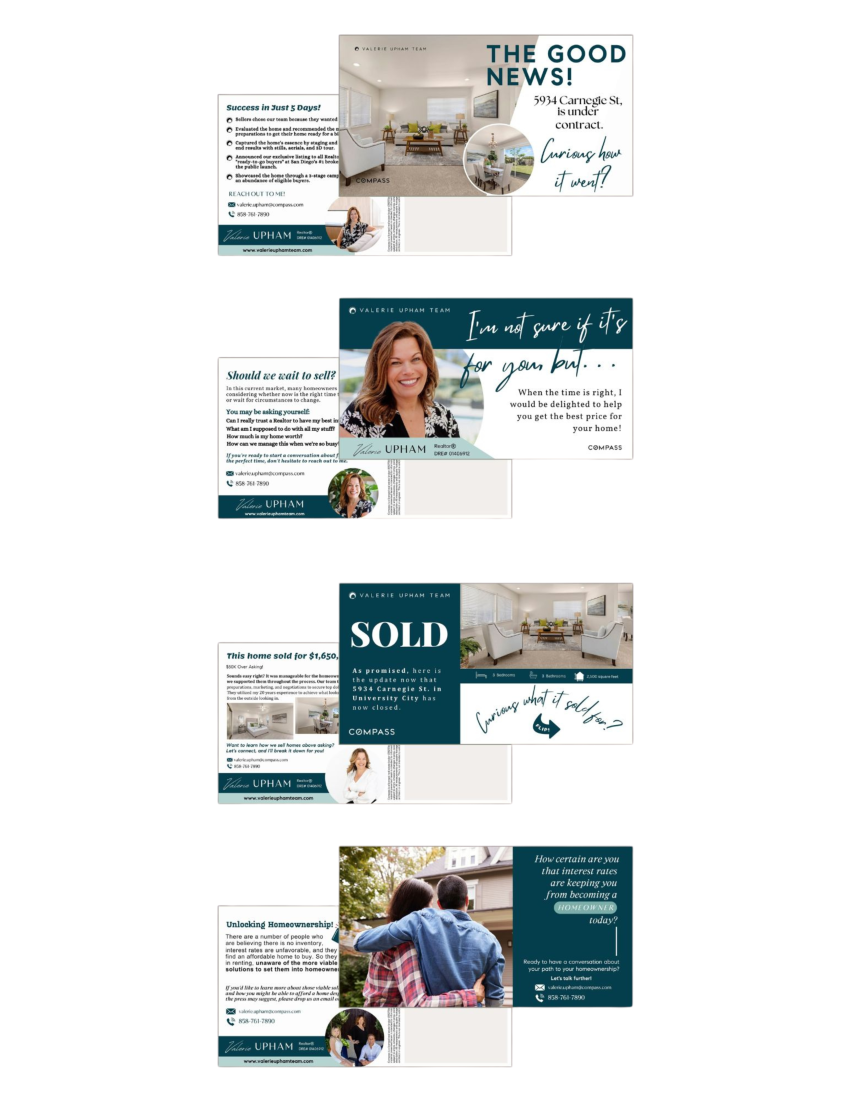Platform
MARKETING MADE SIMPLE
Gifting you exactly what you need to get started.
Valerie Upham is Exactly Who to Call for Your San Diego Real Estate Needs
Ranking in the top 1% of Realtors in the US, she’s someone who can help you.
It’s not just her extraordinary sales record and 20 years in the industry that’s impressive; her generosity, tested and proven marketing methods, and desire to help others make Valerie someone you want to know.
Plus, she comes bearing gifts.
Register to receive access to her monthly postcard marketing strategy for your own use.
Valerie and renowned speaker and author Phil M.Jones partnered to create Exactly What to Roleplay as a way to help real estate agents gain the confidence to have effective conversations that open doors.
As a realtor, you know every open door is an opportunity, and Valerie is a master at opening doors. Her monthly postcard marketing strategy is a key component that grows her business exponentially. Nearly 6,000 San Diego residents receive a monthly postcard from the Valerie Upham team. These postcards help build relationships and keep the team top of mind as known and trusted San Diego Realtors.
Thanks to Valerie’s training and certification as an Exactly What to Say (EWTS) Guide, her entire postcard marketing strategy has been updated with Phil M. Jones’s language to be even more effective. And now, Valerie would like to gift you the postcards so your business can grow too!
Once you’ve registered, the team will email everything you need to update the postcards for your own use. In seconds, you’ll have access to resources that took Valerie’s team years to perfect—all at no cost to you. Simply replace the photos, names, and branding in the Canva template, then tweak the text as necessary. Then, start mailing the postcards, grow your farm, and open more doors.
The gift doesn’t stop there! Once you’re registered, you’ll automatically receive new monthly mailers to stay in touch with your farm and open even more doors.
Plus, here’s a special invitation for you! Join the networking group hosted by Phil and Valerie to learn more about how agents across the US are using EWTS verbiage to grow their Real Estate business.

Download our
FREE Resources
Fill out the form to have our tried and tested postcard templates sent to your email!
By providing Valerie Upham your contact information, you acknowledge and agree to our Privacy Policy and consent to receiving marketing communications, including through automated calls, texts, and emails, some of which may use artificial or prerecorded voices. This consent isn’t necessary for purchasing any products or services and you may opt out at any time. To opt out from texts, you can reply, ‘stop’ at any time. To opt out from emails, you can click on the unsubscribe link in the emails. Message and data rates may apply.
Thank you for reaching out!
We'll get in touch with you soon.
Work With The Valerie Upham Team
Valerie and her team have assisted hundreds of clients to reach their real estate goals. With fierce negotiation skills and extensive knowledge of the San Diego real estate market, they demonstrate a solid proficiency in handling every stage of the process.



